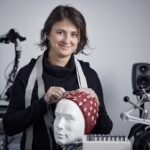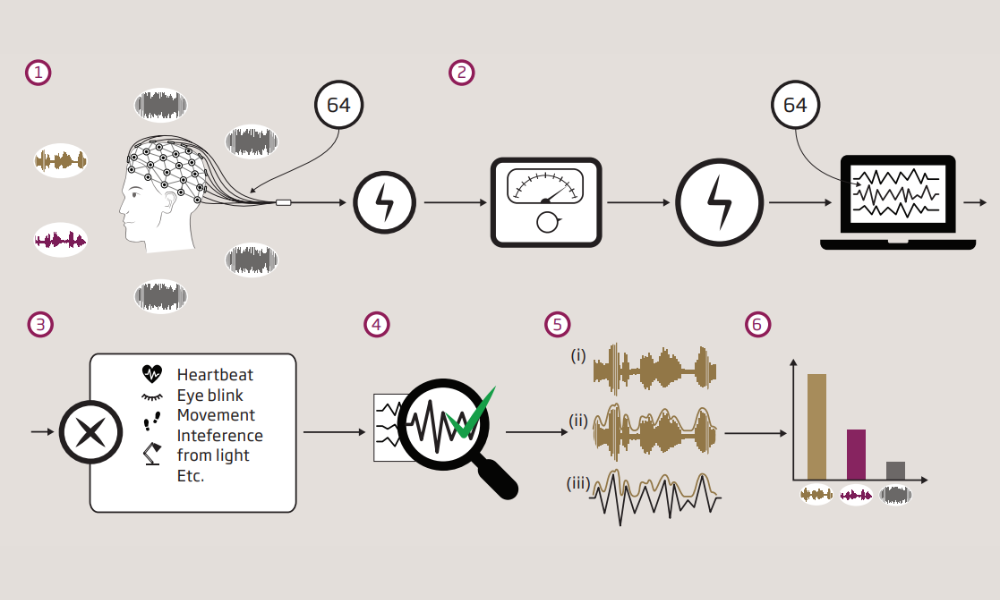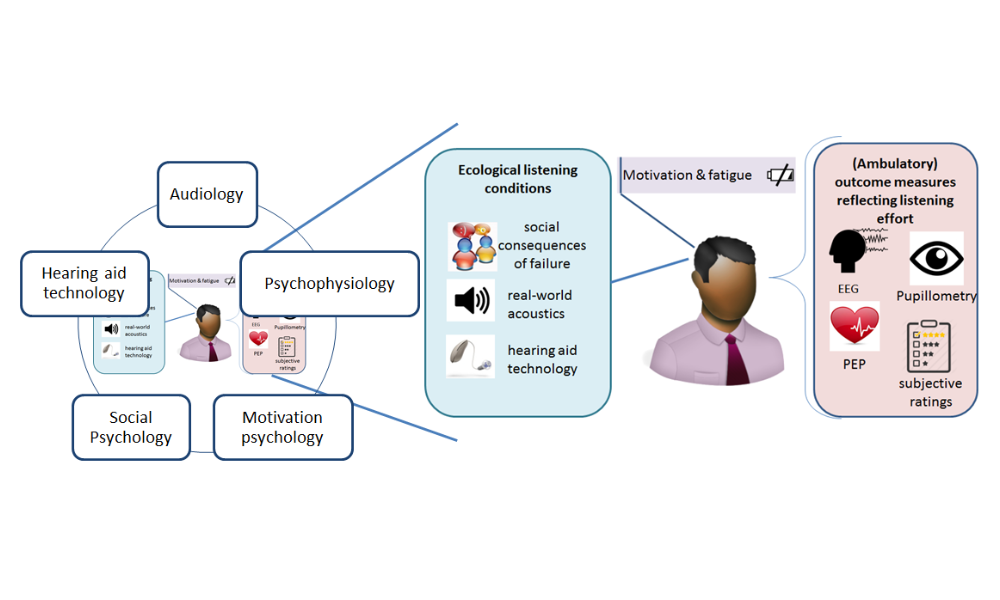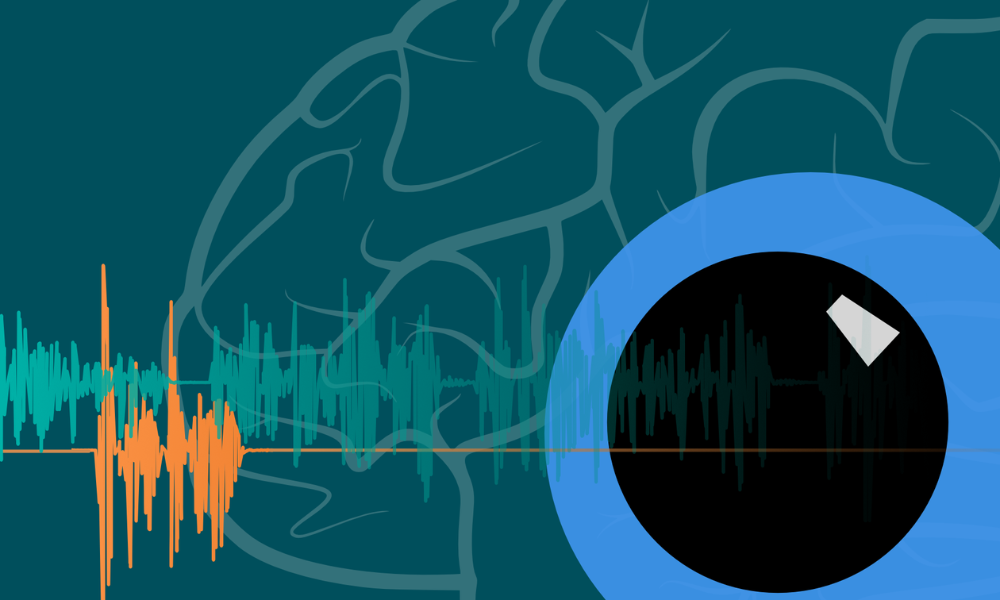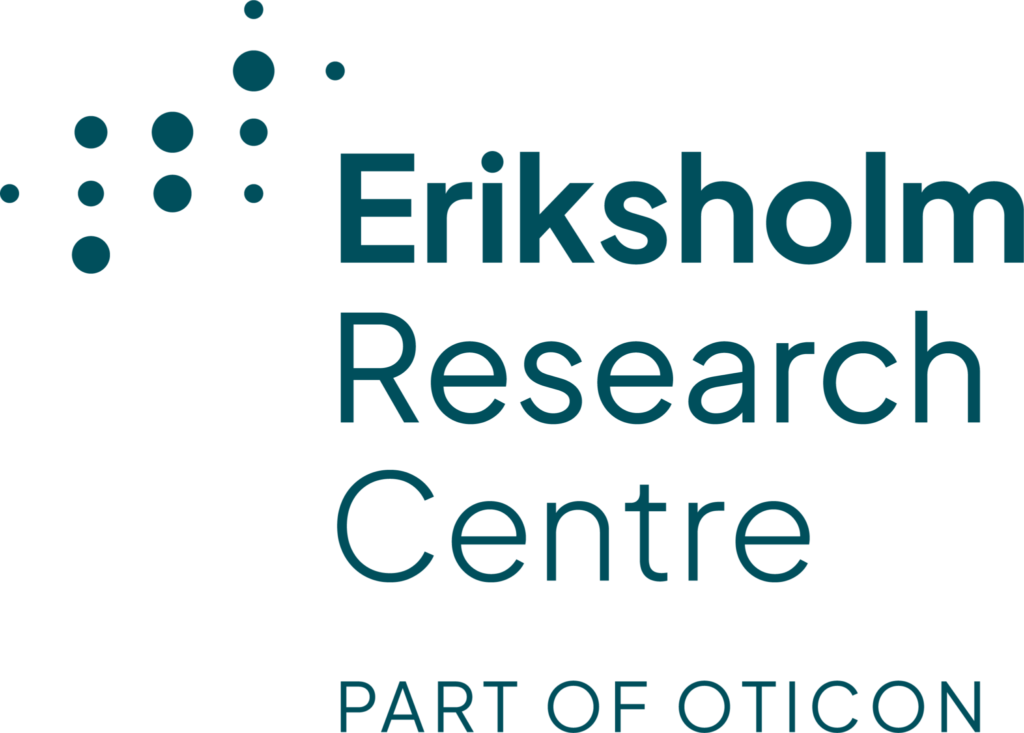Introduction
Selective auditory attention is crucial for effective speech communication and social interaction in complex sound environments throughout the day. However, individuals with hearing impairment face challenges due to changes in sensory input received by the brain. One solution is the use of hearing aids, which provide audibility for previously inaudible frequencies and reduce background noise to improve the signal-to-noise ratio. By reducing background noise, the brain can more easily distinguish speech signals and discern important acoustic cues. This should result in clearer and more salient speech, enabling listeners to better attend to specific sound sources.
Aims
The first goal of this project is to develop new measures to objectively assess selective attention using electroencephalography (EEG), which can measure the brain’s ability to track speech that the listener is attending to over time in a non-invasive manner. The second goal of this project is to use the new measures to assess benefits of an advanced technology in hearing aids. for the first time.
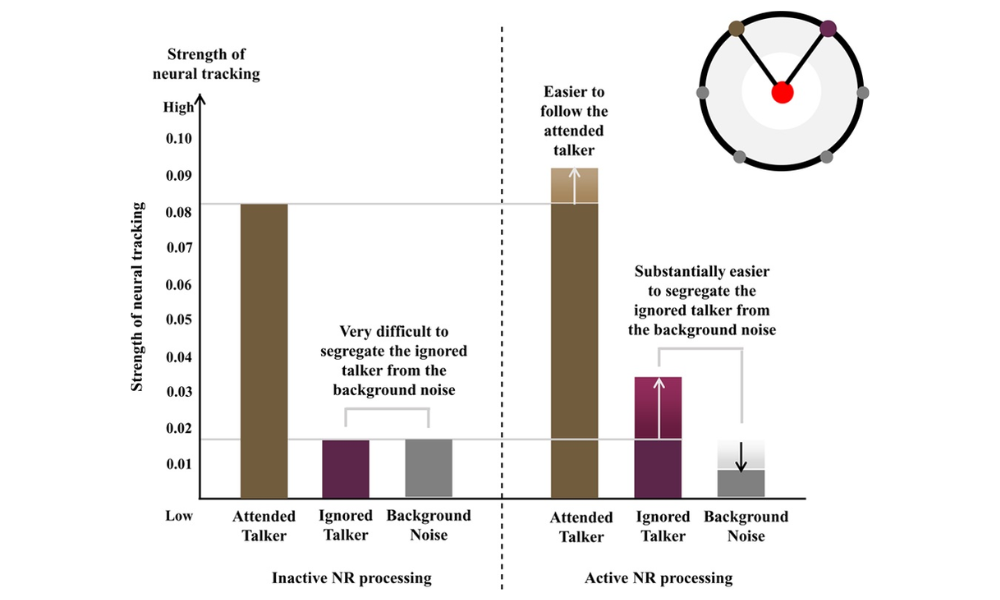
Methodology
In this project, we use EEG to assess how well the brain tracks speech that a listener is attending to in a multi-talker environment. The technique involves recording electrical activity through electrodes placed on the scalp while the listener is instructed to pay attention to an attended speaker while ignoring competing sounds. The collected EEG data is decoded to reconstruct the original speech signal. The correlation between the reconstructed and the original speech signals is calculated, and the values are compared between the attended and unattended conditions to determine the strength of speech representation in the brain.
Results
We show that signal processing algorithms in hearing aids (e.g., noise reduction) significantly enhance the brain’s tracking of the speaker of interest, allowing listeners to better segregate and organize different sound sources. This suggests that the improved audibility of and access to speech details provided by hearing aids contributes to the successful use of selective attention in challenging listening situations.

